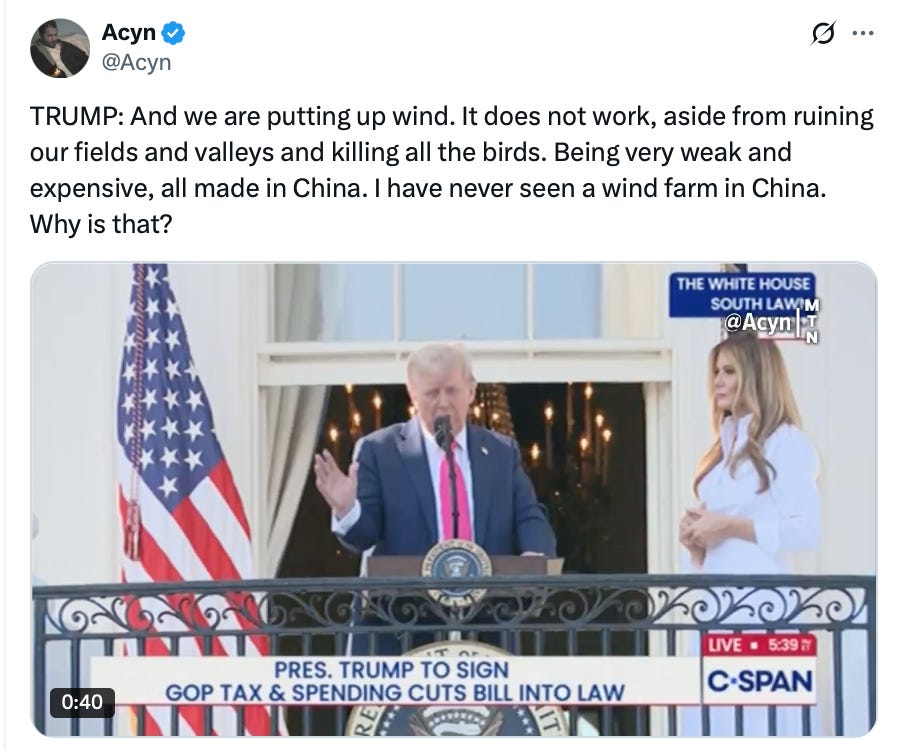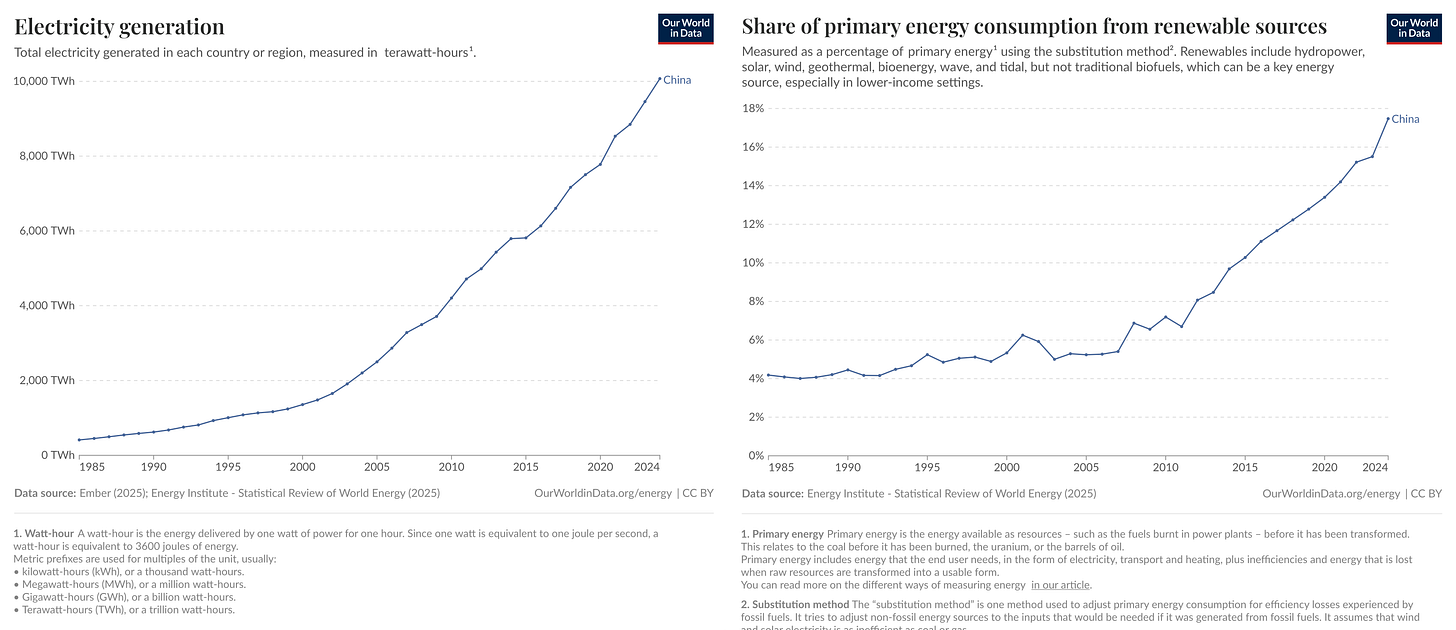Trump's insane war on renewable energy
America needs energy abundance, not polarization and culture war
I’ve often had occasion to write that environmentalists are overrating the prospects of 100 percent renewable energy as a strategy for addressing climate change.
Essentially, they are relying on a badly flawed “levelized cost of energy” metric, which says the marginal cost of adding one megawatt of wind or solar to a fossil-dominated grid is cheap, to conclude that an all-renewable grid would be cheap. This is wrong. Developing an all-renewable grid that could reliably power a temperate country through the winter would be much more expensive than a simple LCOE metric suggests. This is one of the reasons why new technology — affordable nuclear, advanced geothermal, or scalable carbon capture — is so important.
But Donald Trump is running the show now, and he’s making the opposite error.
He’s not trying to create a zero-emission grid or reduce fossil fuel use in any way. But he’s not only rolling back tax credits for wind and solar production, he’s doing everything he can think of to raise new regulatory barriers to renewable deployment. He also keeps asserting that China doesn’t use renewable technologies, suggesting that the mere existence of wind and solar power is harmful.
This is totally false. Not only does China have many wind farms, they generate more wind electricity than the United States does despite a much less favorable geography. And they generate a lot more solar electricity than the United States.
The reason China generates so much renewable electricity is that while constructing an all-renewables grid is a lot more expensive than environmentalists want to concede, it’s absolutely true that incrementally adding renewable energy to the grid is cheap. That’s why China has dramatically increased the amount of renewables it deployed in the context of a dramatic increase in the overall amount of electricity the country generates.
This is what a pure “energy dominance” policy looks like: massive buildout of wind and solar and batteries, because wind turbines and solar panels and batteries are all getting cheaper, with the shortcomings of an all-renewables grid addressed by simply not building an all-renewables grid.
It looks like China’s carbon dioxide emissions are finally leveling off. But while China was building out these renewables, they were also burning more fossil fuels. This is obviously not a strategy for achieving the environmental movement’s goals. But if you’re Donald Trump and you don’t want to achieve rapid decarbonization, there is still genuinely no problem with opening the floodgates to renewable deployment.
All Trump will accomplish by throttling renewables is making costs higher and the air dirtier than if he just let Americans use technologies that really are quite cheap at the current margin. He’s letting culture war prejudice, special interest politics, and polarization get in the way of his stated goals of lower costs and energy dominance.
An all-renewable grid has big problems
In the US (unlike in China), wind and solar power are so closely associated with the environmental movement that discourse around them tends to focus on environmentalists’ aspiration to run the country on 100 percent renewable power.
The economic cost of achieving environmentalists’ vision with current technologies is prohibitively expensive. Solar power, obviously, only works when the sun is shining, which is a problem if you want the lights to be on at night. The good news, though, is twofold.
Keep reading with a 7-day free trial
Subscribe to Slow Boring to keep reading this post and get 7 days of free access to the full post archives.



